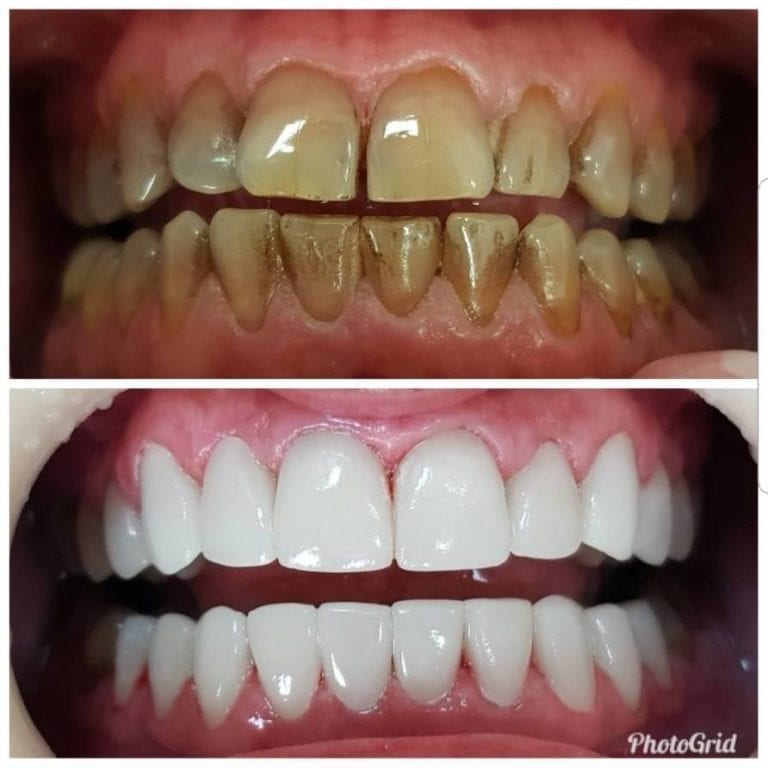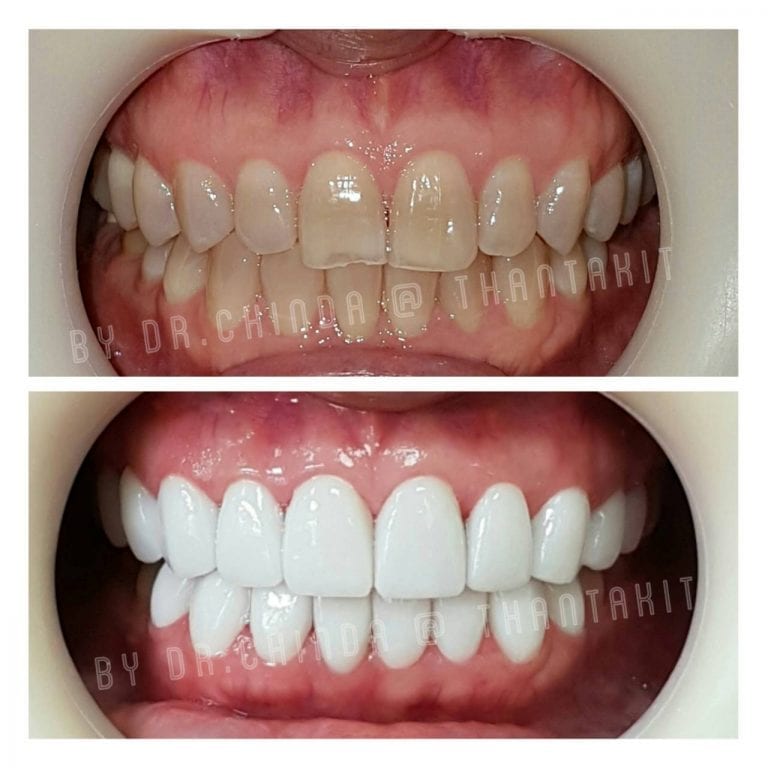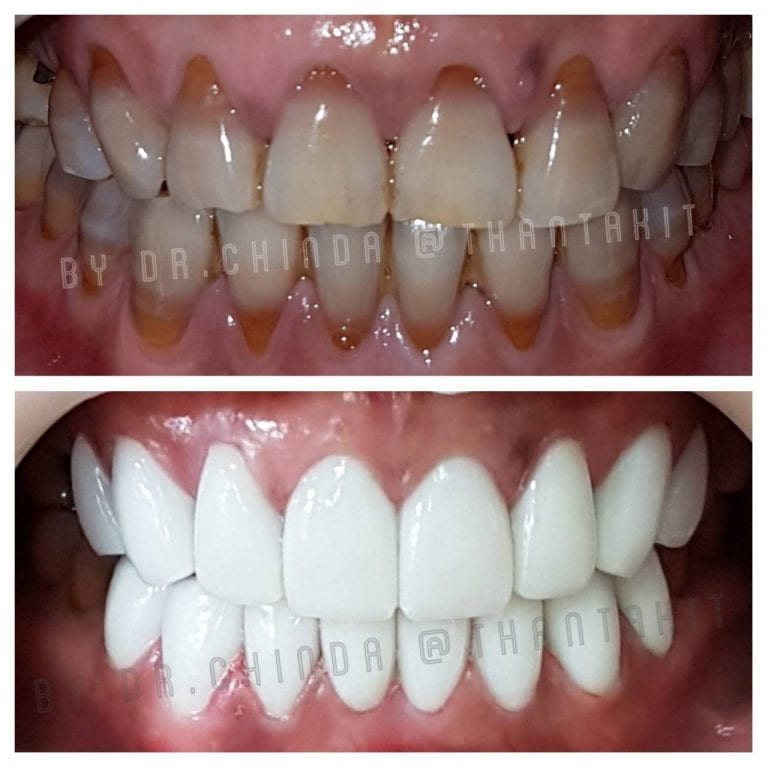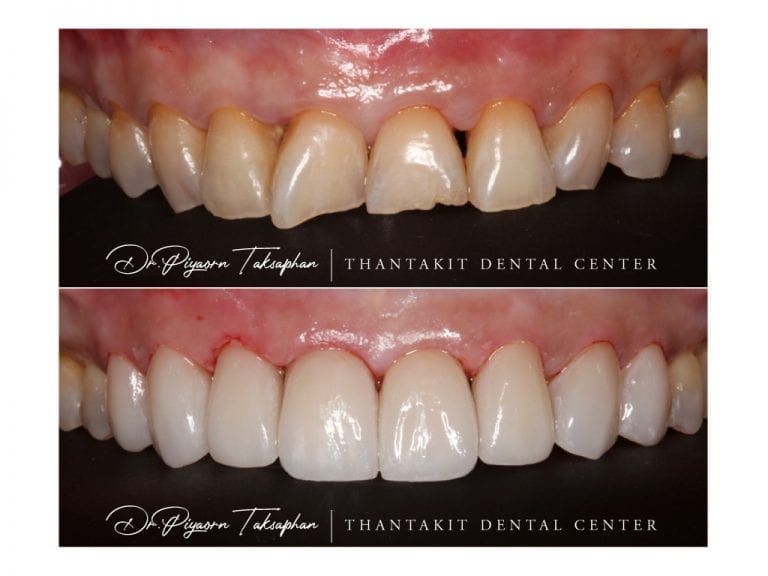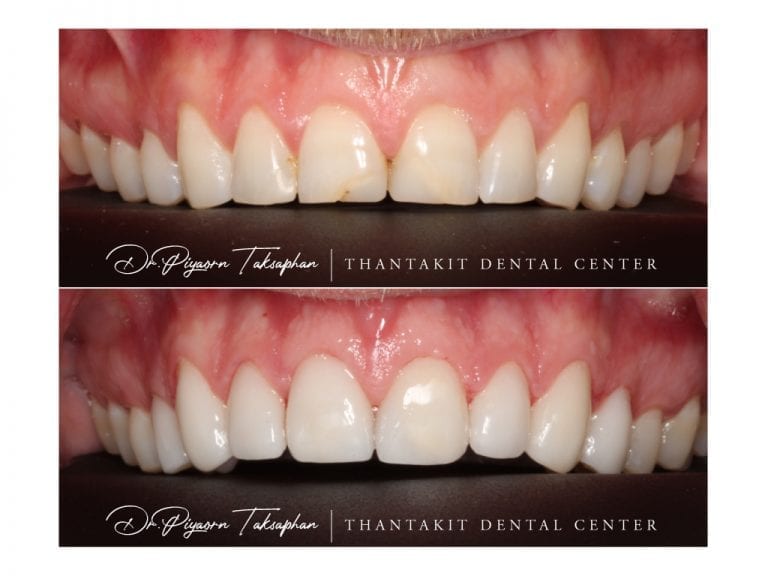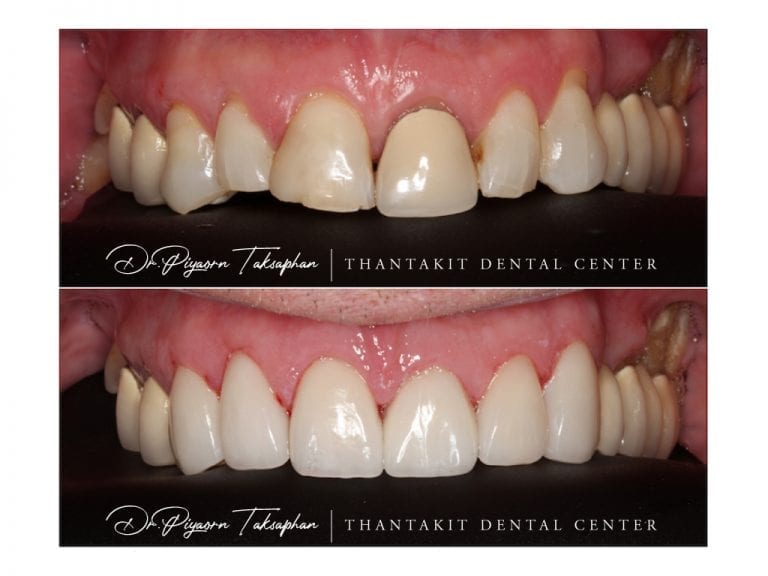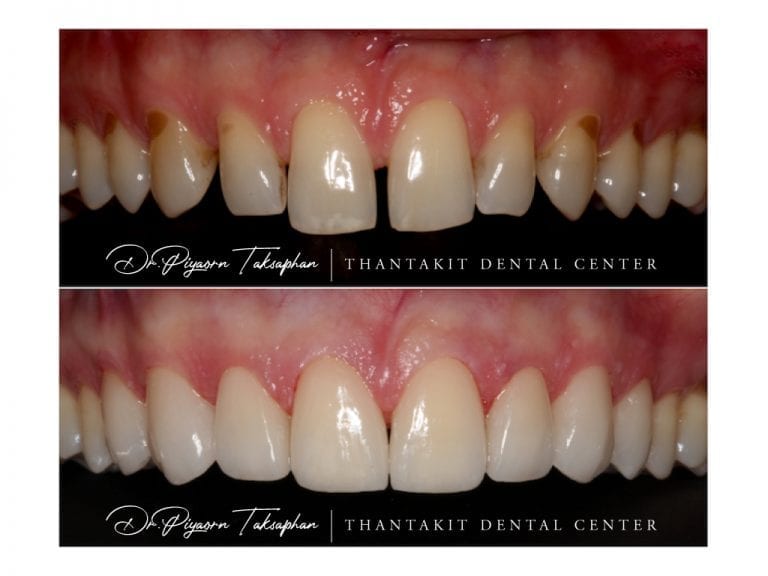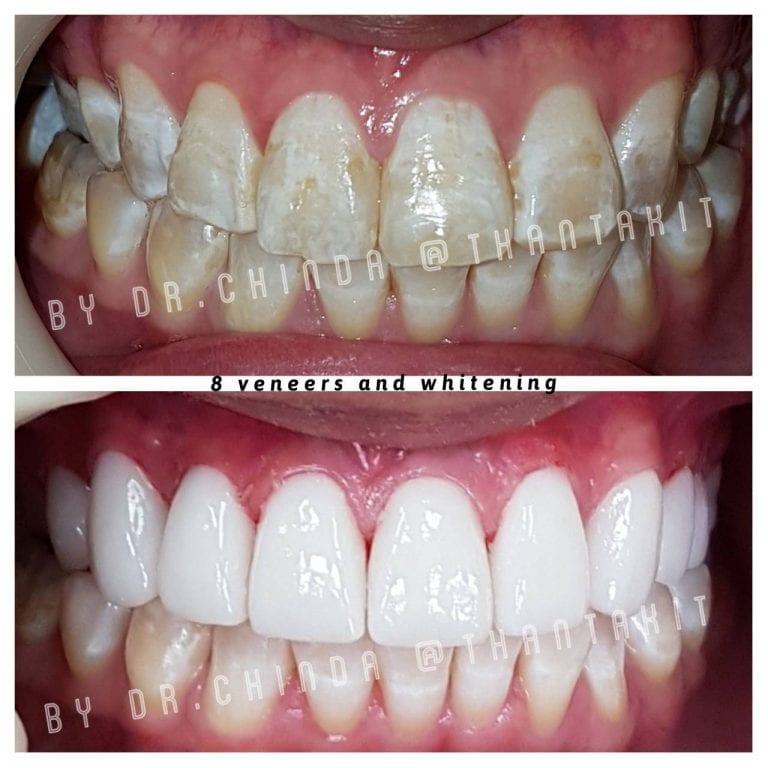DENTAL VENEERS (PORCELAIN/CERAMIC AND COMPOSITE RESIN)
Veneers are wafer thin laminates or shells of tooth colored material (which can be either porcelain, ceramic or composite bonding material) that are “cemented” to the front surface of teeth to improve their cosmetic appearance. Many dentists use the analogy that dental veneers are for your teeth what false finger nails are for your hands. In a similar manner to how false finger nails are placed or glued to your existing fingernails, veneers are bonded to the front of your existing teeth.
Problems which veneers can solve
There are a wide variety of reasons why patients opt for treatment with dental veneers:
Stained Teeth – badly stained teeth that cannot be improved by teeth whitening can greatly be improved by dental veneers, which function to cover and “hide” any existing stains on your natural teeth.
Damaged Teeth – teeth that have either become badly worn with excessive grinding, by carbonated drinks, or have been chipped or broken in an accident can benefit from veneers. A small chip on a tooth can quickly be repaired with composite bonding or “composite veneers” which are one and the same thing. A single damaged tooth can easily be repaired with a single porcelain veneer that has the same characteristics and color to match your surrounding teeth so that it looks natural.
Gaps- spaces or gaps (diastmas) between your teeth can be easily closed using dental veneers giving you a more uniform looking smile.
Crooked teeth- although veneers are not the ideal treatment choice for crooked teeth and from a point of view of preserving your natural teeth structure orthodontics or invisalign braces would probably a better solution. However, treatments can take up to a year or longer with braces. For teeth that are not severely crooked veneers placed over their front surface will give a straight and perfectly aligned looking smile. For this type of treatment many people refer to veneers as “instant orthodontics” since you get a similar end result in a fraction of the time.
OUR REAL CASES OF PORCELAIN VENEERS
Composite Veneers vs Porcelain Veneers (IPS Empress System)
The most popular type of veneers are porcelain, which offer a stronger and more durable alternative to its composite counterpart. Composite veneers are also more prone to staining and do not last as long as porcelain veneers which also offer more a natural looking, translucent tooth-like appearance. Composite veneers are much cheaper than porcelain veneers in general, but considering that they do not last as long and need replacing more often they could end up costing more in the long run. Composite work is ideal for small chips as this treatment preserves more of your natural tooth structure.
Both porcelain veneers and composite veneers can be fabricated by a dental technician in a dental laboratory; composite veneers can also be directly fabricated inside your mouth at the dental office.
Dental veneers that are indirectly fabricated — fabricated in a dental laboratory — are bonded to the teeth with various types of resin cement. Of the two options, porcelain veneers are longer lasting and more expensive.
Procedure of having dental veneers
- The first part of any dental procedure is the initial consultation and examination so that the dentist can get a feel for what you want and understand your needs and concerns. The dentist should explain the treatment procedure to you including an accurate guide to the likely costs of your treatment.
- Before your veneers are designed your dentist will need to reshape and prepare the front surfaces of your teeth so that they can accommodate the veneers. The first stage is to numb the teeth and gums with a local anesthesia so that you do not feel anything during the procedure.
- Using a special tool called a burr (a dental drill or file) a tiny amount of the front surface of your teeth will be shaved off. The amount removed should be equivalent to the thickness of the veneer that will sit over the top of the tooth.
- Next an impression or mould (copy) of your teeth is taken. A special dental “putty” is placed into your mouth on a tray and pushed into your teeth so that it takes an imprint of your teeth, similar to how you would leave a footprint in sand.
- This “impression” or mould of your teeth is then sent to a dental laboratory. The laboratory use the impression to cast an accurate model of your teeth which is used as a guide to fabricate your new veneers, this process can tae between one to three weeks.
- Whilst you are waiting for your veneers to be fabricated your dentist you may be fitted with some temporary veneers to protect your prepared teeth. Not all dentists will offer temporary veneers.
- On your second appointment your dentist will fit your new veneers to your teeth. First the dentist may just sit the teeth over your teeth to see how they look with your smile and he or she may need to trim or adjust the veneer.
- Next your teeth will be thoroughly cleaned and the front surfaces etched (roughened) with a special acid gel so that they provide a good surface for the dental cement to stick to.
- The veneers are then cemented into place and a special curing light is used to activate the dental cement so that it permanently bonds the veneer to the front surface of your prepared tooth. If there is any excess cement it is usually trimmed away and polished to leave a beautiful and natural looking restoration.
How long do dental veneers last?
Porcelain veneers will typically last between 5-10 years and composite veneers maybe a year or two at the most. The bottom line is that eventually your veneers will need to be replaced. Although veneers are strongly cemented into place they have been cases where they come loose and fall off, in such situations it is important that you keep hold of your veneer and contact your dentist immediately. To make your veneers last longer it is important to follow a good oral hygiene program and also visit your dentist for check ups on a regular basis.
When are veneers appropriate?
Bonding often serves as an inexpensive and effective restoration for small chips and cracks in the teeth. Such minor problems may be functionally and cosmetically repaired with a composite “white filling.” A composite resin material is bonded to the tooth in order to fill in the chip or crack and better protect the surrounding tooth structure. But for more severe cases of dullness, wear, discoloration, mild chipping, cracking, spacing, or uneven teeth, dental veneers may be recommended as a more appropriate solution.
Veneers or Whitening?
Tooth whitening may provide a white smile for mildly discolored teeth. Some people who are interested in veneers will find that their cosmetic dentist will steer them to the simpler alternative of whitening, perhaps combined with some simple orthodontic alignment. The placement of dental veneers requires the “shaping” or “prepping” of all teeth being fitted with the custom-designed shells. This process permanently alters the teeth that are treated and is therefore not recommended if your natural teeth are functionally and esthetically adequate.
If you have a severe case of dull or discolored teeth, you may have to opt for dental veneers. Veneers do have the added benefits of longevity and a proven ability to enhance the appearance of the mouth, smile, and possibly other areas of an aged face that would be better supported by properly shaped teeth. Although veneers require a much larger commitment than teeth whitening, the results are typically well worth it.
VENEERS (COMPOSITE OR PORCELAIN)
| Composite Veneer | THB | Duration |
| Composite Resin Veneer (Direct Bonding) | 6,000 per tooth | 1 Visit |
| Porcelain Veneer | THB | Warranty |
| Porcelain e.Max Veneer | 18,000 per tooth |  |
| Zirconia Veneer | 18,000 per tooth |  |
| Zirconia Veneer with Digital Smile Design (DSD) | 22,000 per tooth 20,000 per tooth (8 teeth) |
 |









